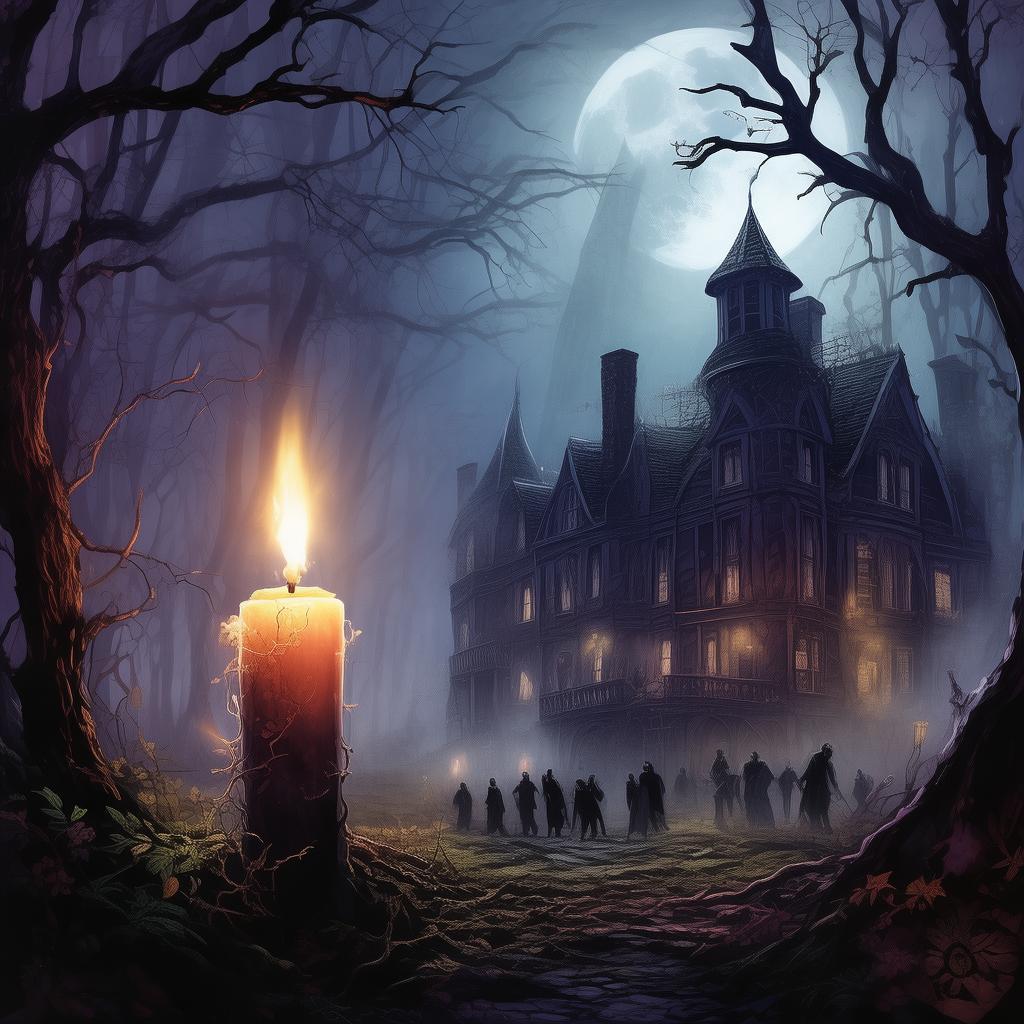The Berlin Burlesque: A Ghost's Bauhaus Ballad
In the heart of Berlin, where the remnants of the Weimar Republic still whisper secrets through the cobblestone streets, there stood an old theater, now a forgotten relic of the city's vibrant past. The Berlin Burlesque, once a beacon of artistic freedom and creativity, had fallen into disrepair, its grandiose facade a testament to the bygone era of the Bauhaus movement.
Amidst the decay, an enigmatic young artist named Elara had found her sanctuary. She was a wanderer, a seeker of the past, her soul yearning for the stories that Berlin's walls had to tell. Elara's art was a blend of the old and the new, her canvases a patchwork of the Bauhaus aesthetic and her own modern interpretations of the city's history.

One evening, as the city was draped in the twilight of a cold autumn, Elara found herself in the Berlin Burlesque. The theater's interior was a labyrinth of shadows and whispers, the air thick with the scent of old wood and forgotten dreams. She wandered through the dimly lit corridors, her footsteps echoing in the silence, until she reached the main hall.
The hall was a cavernous space, its ceiling high and its walls adorned with faded murals of dancers and performers, remnants of the theater's heyday. Elara's eyes were drawn to a grand piano at the center of the stage, its keys covered in a layer of dust. She approached it, her fingers tracing the keys, feeling the echoes of melodies long forgotten.
Suddenly, a haunting melody began to play, its notes weaving through the air like a ghostly whisper. Elara's heart skipped a beat as she recognized the tune—a ballad from the Bauhaus era. The music was ethereal, almost as if it were composed by the spirits of the past.
Curiosity piqued, Elara sought out the source of the melody. She climbed the grand staircase that led to the upper levels of the theater, her footsteps growing fainter as she ascended. The higher she went, the more the music grew intense, the notes echoing through the empty corridors.
At the top of the stairs, Elara found herself in a small, forgotten room. The room was filled with old photographs and artifacts from the Bauhaus movement, each piece a relic of a bygone era. In the center of the room stood a life-sized portrait of a woman, her eyes staring directly at Elara.
The portrait was of a performer, her expression both haunting and captivating. Elara's breath caught in her throat as she realized that the woman in the portrait was the same figure that had appeared in the murals throughout the theater. The woman was a ghost, a spirit bound to the Berlin Burlesque.
The ghostly woman approached Elara, her presence tangible yet ethereal. "You have come to me," she said in a voice that seemed to resonate with the very walls of the room. "I am the spirit of the Berlin Burlesque, and I have a tale to tell."
Elara listened as the ghostly woman recounted the story of her life. She was a Bauhaus ballerina, a dancer whose artistry was matched only by her beauty. But her beauty was her downfall, for it attracted the jealousy of a powerful man who sought to possess her. In a fit of rage, he had banished her to the afterlife, where she remained, trapped in the Berlin Burlesque, her spirit forever entwined with the theater.
As the story unfolded, Elara realized that the woman's story was not just a tale of past tragedy, but a reflection of her own life. She had been searching for her identity, for the part of herself that had been lost in the chaos of her past. The ghost's ballad was a call to remember her roots, to embrace the artist within.
With newfound clarity, Elara approached the portrait of the Bauhaus ballerina. She placed her hand on the woman's face, feeling the coolness of the canvas against her skin. "I understand now," she whispered. "I am the Berlin Burlesque, the Bauhaus ballad, the battle, the beauty, the beast."
The ghostly woman nodded, her eyes softening. "You have found your place, Elara. You are the spirit of the Berlin Burlesque, and you will carry on its legacy."
As the ghost's ballad played once more, Elara felt a surge of energy course through her veins. She knew that her art would now be a testament to the spirit of the Berlin Burlesque, a bridge between the past and the present, a reminder of the beauty that can be found in the remnants of a bygone era.
And so, Elara left the Berlin Burlesque, her heart filled with a sense of purpose. She returned to her studio, her canvas blank and ready for her next creation. The Berlin Burlesque: A Ghost's Bauhaus Ballad had become more than a story; it was a part of her, a piece of her soul forever intertwined with the spirit of the city.
In the years that followed, Elara's art gained fame, her work celebrated for its blend of the old and the new, the past and the present. But to those who knew her true story, it was clear that her art was not just a reflection of her talent; it was a testament to the haunting legend of the Berlin Burlesque, a ghost's ballad that had come to life.
✨ Original Statement ✨
All articles published on this website (including but not limited to text, images, videos, and other content) are original or authorized for reposting and are protected by relevant laws. Without the explicit written permission of this website, no individual or organization may copy, modify, repost, or use the content for commercial purposes.
If you need to quote or cooperate, please contact this site for authorization. We reserve the right to pursue legal responsibility for any unauthorized use.
Hereby declared.









